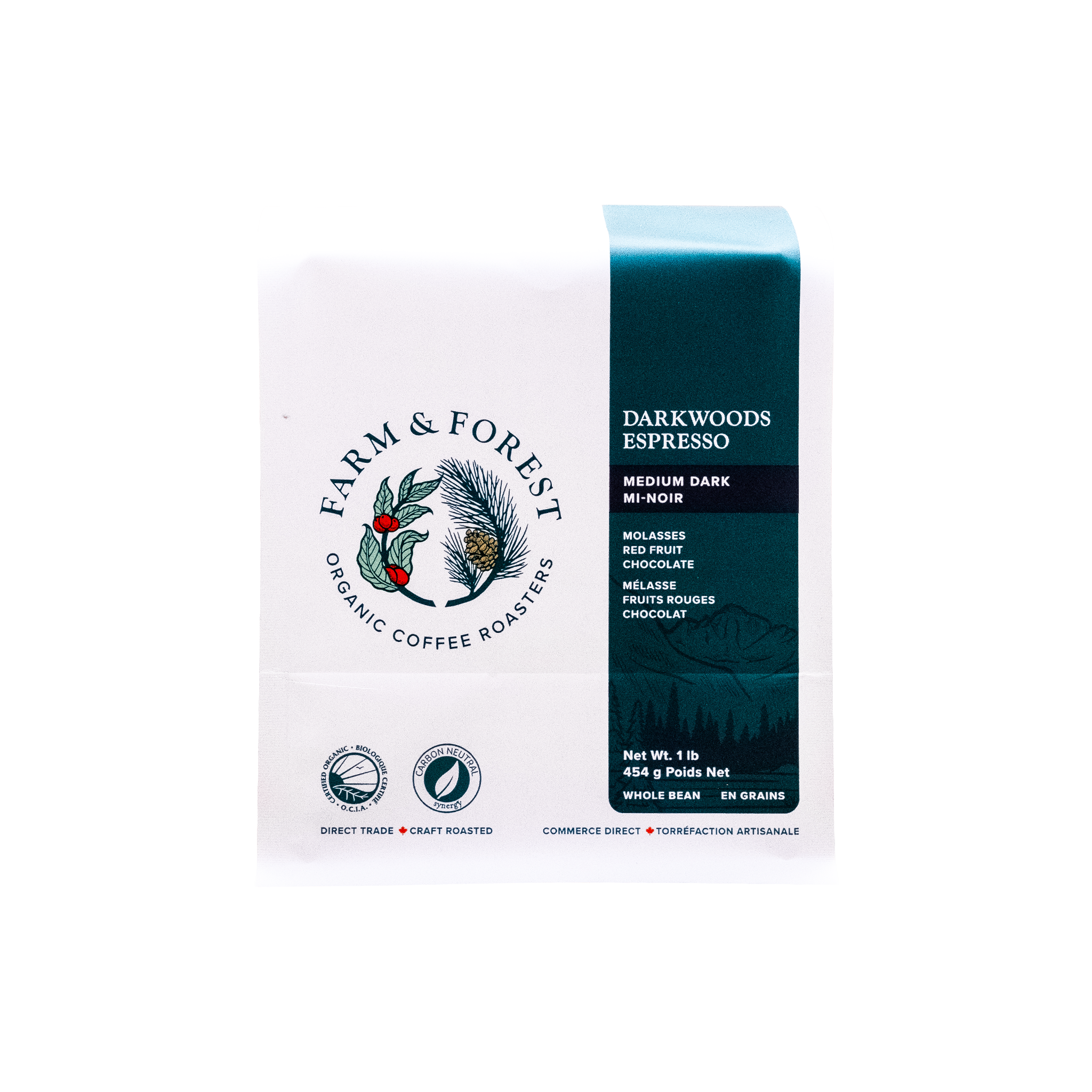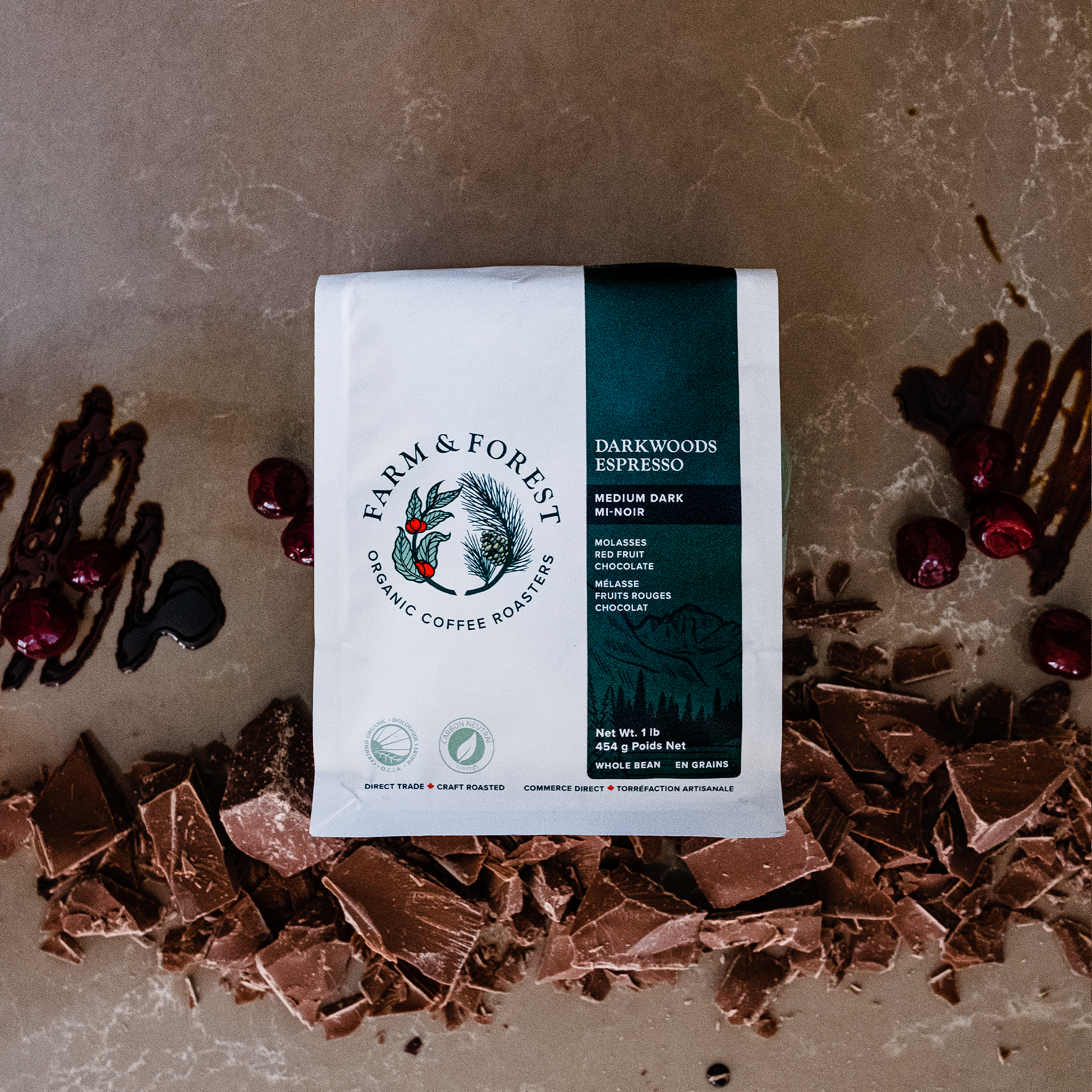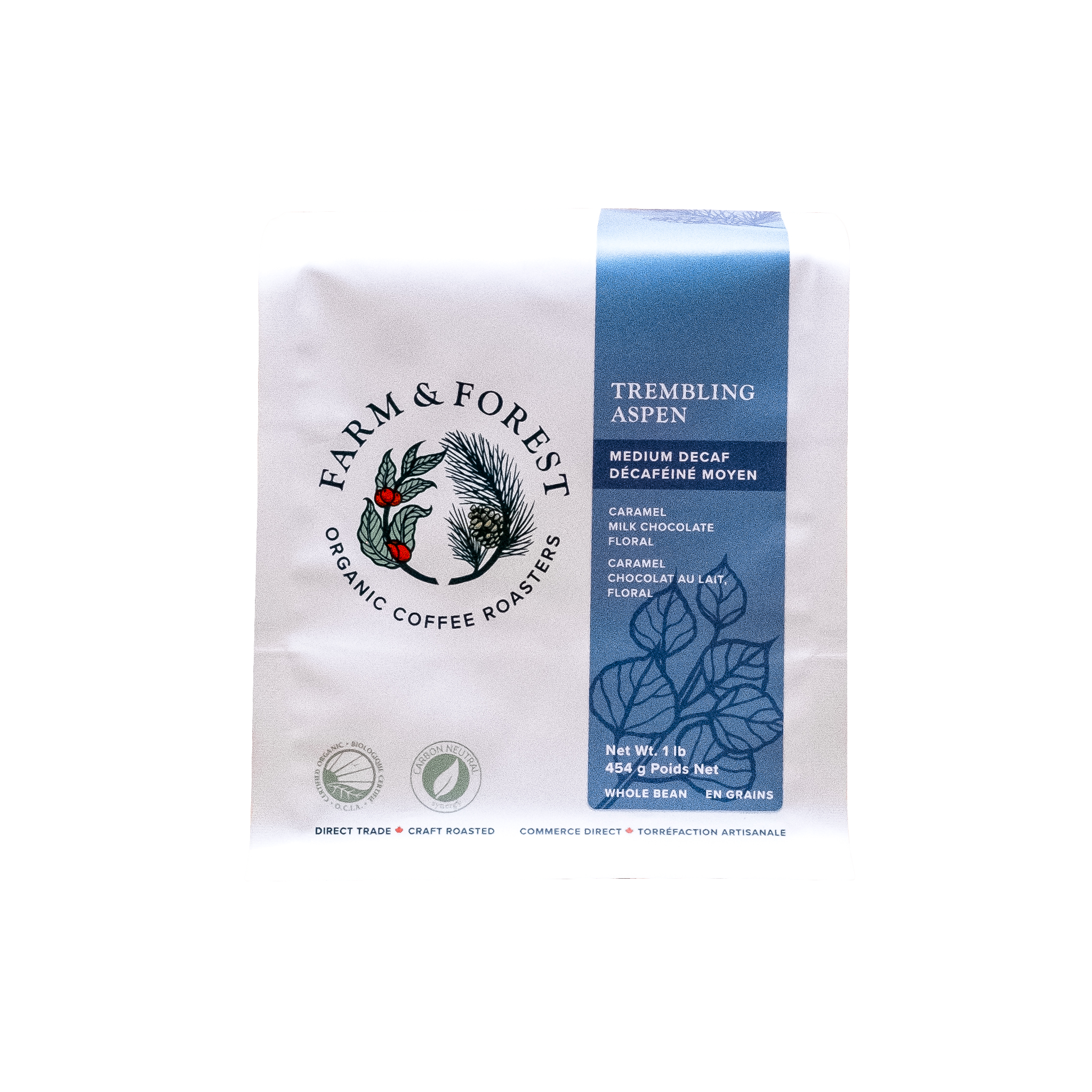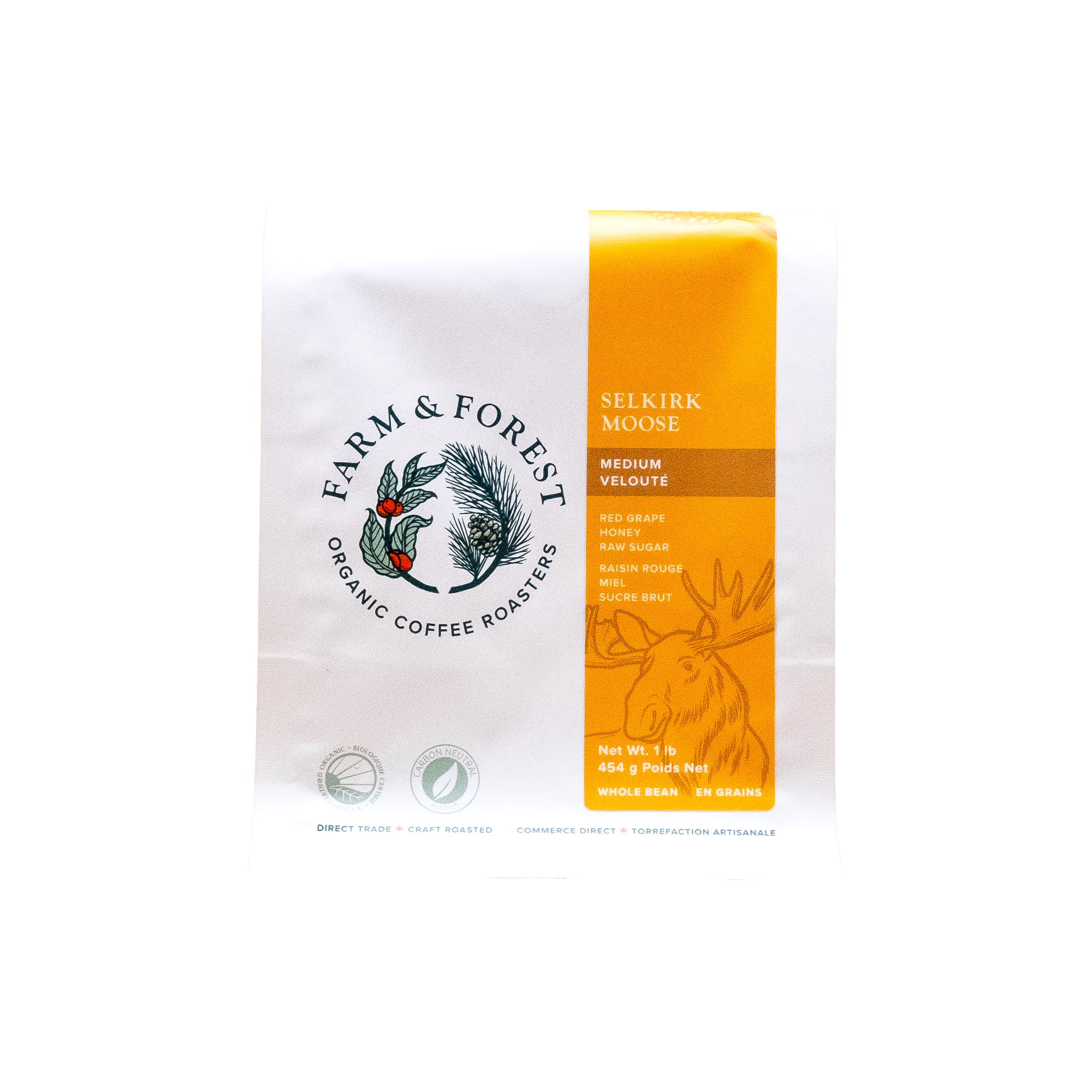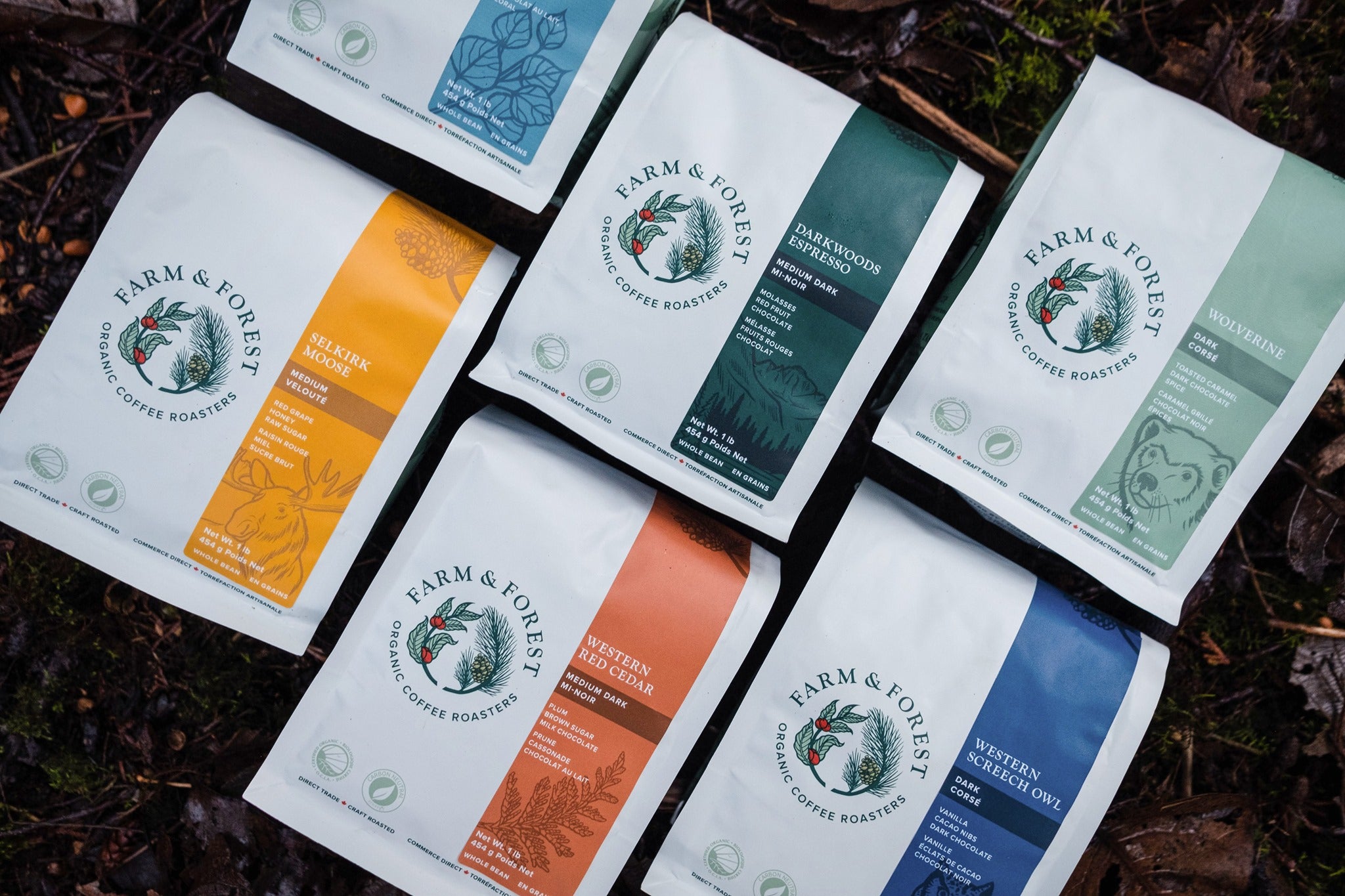Freezing Coffee Beans Guide: How to Freeze Coffee Beans for Optimal Freshness
Freshly roasted whole coffee beans can retain their peak flavour and aroma for about 2 to 4 weeks when stored properly in an airtight container at room temperature, away from direct sunlight, heat, and moisture. However, when frozen following the proper techniques, coffee beans can maintain their freshness for extended periods, up to 3 to 6 months, preserving their flavour compounds and ensuring a consistently delightful brew.
Here we’ll go through the steps and techniques for freezing coffee beans, so you can wake up to the rich aroma of freshly brewed coffee every morning, while you wait for your next organic coffee delivery. What we’ll cover:
-
What makes coffee beans deteriorate?
-
How to properly store your coffee beans
-
Best Practices for Freezing Coffee Beans
-
Choosing your coffee beans for freezing
-
The perfect packaging for coffee bean freezing
-
Selecting your portions and labeling
-
Coffee bean thawing techniques
-
How to use frozen coffee beans
-
Pros of grinding frozen coffee beans
-
Cons of grinding frozen coffee beans
-
Freezing coffee beans FAQs
What makes coffee beans deteriorate?
To maintain the perfect flavour of your coffee beans, you need to know what deteriorates the beans to try and avoid it, and those factors are:
-
Oxygen exposure triggers oxidation, leading to the breakdown of volatile compounds responsible for coffee's flavour and aroma.
-
Light and heat exacerbate this process, accelerating the degradation of these delicate compounds.
-
Moisture is another culprit, as it can promote the growth of mold and spoilage, further compromising the beans' quality.
-
Prolonged storage without proper protection can lead to flavour loss and staleness, diminishing the overall freshness and enjoyment of the coffee.
The natural oils present in coffee beans can turn rancid over time, especially when exposed to the elements listed before. The breakdown of these oils alters the brewing process, leading to inconsistent extraction, resulting in a less enjoyable coffee experience.
How to properly store your coffee beans
Now that you know what can spoil your coffee beans, the key to keeping those fresh is proper storage. In the next paragraphs we’ll cover all you need to know and the steps for coffee bean storage:
-
Airtight Container: Storing coffee beans in an airtight container helps prevent oxygen exposure. By sealing the beans in an airtight container, you create a barrier that helps preserve their freshness and flavour for a longer period.
-
Cool, Dark Place: Keeping coffee beans in a cool, dark place, such as a pantry or cupboard, helps protect them from light and heat. By storing beans in a cool, dark environment, you maintain a more stable temperature, which helps preserve the integrity of the beans' flavour compounds and extends their freshness.
-
Whole Bean Storage: Storing coffee beans in their whole form, rather than grinding them in advance, helps maintain their freshness for a longer period. Grinding exposes more surface area to oxygen, accelerating the oxidation process and leading to faster flavour degradation. By storing beans whole and grinding them just before brewing, you can ensure a fresher, more flavorful cup of coffee.
-
Vacuum Sealing: Vacuum sealing removes air from the storage container, creating a vacuum that helps prevent oxidation and moisture absorption. This method is particularly beneficial for long-term storage, ensuring that the beans retain their flavour and aroma for an extended period.
Best Practices for Freezing Coffee Beans
Choosing your coffee beans for freezing
When selecting coffee beans for freezing, prioritize freshness and quality. Opt for high-quality, freshly roasted beans, as these will have the best flavour and aroma to preserve. Look for beans that have been roasted within the past few days or weeks (that is guaranteed when you order your Farm & FOrest Coffee), as fresher beans will retain their flavour more effectively during freezing.
- Lighter roasts tend to preserve the beans' inherent flavours and acidity, resulting in a brighter and more nuanced cup of coffee. Freezing lighter roasts can help maintain these delicate flavours, preserving their freshness and vibrancy.
- Darker roasts undergo more caramelization during the roasting process, resulting in bolder and richer flavours with reduced acidity. While freezing can still preserve the overall quality of darker roasts, some subtle nuances may be lost, and the coffee may exhibit a slightly muted flavour profile compared to its freshly roasted counterpart.
The perfect packaging for coffee bean freezing
Choosing the right packaging for freezing coffee beans is crucial to maintaining their freshness and flavour integrity over time. Airtight and moisture-resistant packaging helps prevent exposure to oxygen and humidity, which can lead to flavour degradation and freezer burn. The packaging should also be durable enough to withstand freezing temperatures without compromising its seal. Some effective packaging options are:
- Vacuum-sealed bags remove air from the package, minimizing oxidation and preserving the beans' freshness. Resealable freezer bags provide a convenient and cost-effective option for portioning and storing coffee beans.
- Airtight containers offer sturdy protection against moisture and air exposure. But make sure that you have freezer-approved ones, as plastic containers can easily crack due to the low temperatures.
- Bags with one-way valves allow for the release of carbon dioxide gas produced by freshly roasted coffee while preventing oxygen from entering, further safeguarding the beans' flavour.
Selecting your portions and labeling
When selecting portions of coffee for freezing, it's essential to consider your consumption habits and brewing preferences. Dividing the beans into smaller or individual portions based on your typical usage ensures that you only thaw what you need, minimizing exposure to air and preserving freshness.
Whether you prefer daily single servings or larger batches for occasional use, portioning allows for convenient access to freshly frozen beans without compromising quality.
Additionally, labeling each portion with the date of freezing is crucial for tracking freshness and ensuring rotation. By clearly labeling the portions, you can easily identify when the beans were frozen and prioritize using the oldest batches first.
Taking note of the coffee type, and roast level makes it easier for you to get the perfect cup you want, to make sure that you get the right Wolverine dark roast to kick up your morning or the perfect Trembling Aspen Decaf for the best end of day cup.
Coffee bean thawing techniques
The best coffee bean thawing techniques prioritize gradual thawing to minimize condensation and preserve flavour integrity.
Here are your options:
-
Transferring the frozen beans from the freezer to the refrigerator. This slow thawing process allows the beans to gradually reach room temperature, minimizing moisture buildup and preventing rapid temperature fluctuations that can compromise flavour.
-
Remove the desired portion of frozen beans from the freezer and let them sit at room temperature for a few hours. This approach allows for natural thawing, ensuring a gentle transition from frozen to room temperature without exposing the beans to sudden temperature changes.
Both methods prioritize gradual thawing to preserve the delicate flavours and aromas of the coffee beans, resulting in a more enjoyable cup of coffee. Remember to experiment to see which one delivers the best results for you.
How to use frozen coffee beans
Most people will thaw the beans and use them as regular fresh beans, and that allows a smoother and more consistent grinding, resulting in a more uniform particle size and better extraction during brewing.
You need to keep in mind that thawed beans have a shorter shelf life compared to frozen beans and must be used within a relatively short period to maintain freshness.
For that reason some coffee enthusiasts grind their coffee beans while frozen, preference and testing are always king here so we’ll cover the pros and cons:
Pros of grinding frozen coffee beans
-
Freshness Preservation: Grinding frozen beans helps preserve their freshness by minimizing exposure to oxygen and moisture, which can degrade flavour.
-
Convenience: Grinding frozen beans allows for immediate use without the need to wait for thawing, making it a convenient option for busy mornings.
-
Reduced Heat Buildup: Grinding frozen beans generates less heat compared to grinding at room temperature, which can help preserve the volatile compounds responsible for flavour and aroma.
Cons of grinding frozen coffee beans
- Potential Damage to Grinder: Not all coffee grinders are designed to handle frozen beans. Grinding frozen beans can be harder on the grinder's blades and motor, potentially causing damage over time.
- Inconsistent Grind: Some grinders may struggle to achieve a consistent grind when processing frozen beans, leading to uneven extraction and potentially affecting the taste of the coffee.
- Limited Adjustability: Grinding frozen beans may limit the ability to adjust grind size accurately, as the beans may be harder and more resistant to grinding compared to thawed beans.
Freezing coffee beans FAQs
Can you freeze coffee beans to maintain freshness?
Yes, freezing coffee beans can help preserve their freshness and flavour for an extended period. Properly freezing coffee beans halts the degradation process by minimizing exposure to oxygen, light, heat, and moisture, all of which contribute to flavour loss and staleness.
How long can you freeze coffee beans?
Coffee beans can be frozen for up to 3 to 6 months while still maintaining their quality and flavour. However, it's essential to store them in airtight containers or resealable bags designed for freezer use to prevent moisture absorption and freezer burn.
Should I grind coffee beans before freezing them?
While you can grind coffee beans before freezing, it's generally recommended to freeze them in their whole bean form. Grinding coffee beans exposes more surface area to air, leading to faster oxidation and flavour degradation. Grinding frozen beans is an option, but it may require adjustments to achieve a consistent grind size.
How do I thaw frozen coffee beans?
While you can grind coffee beans before freezing, it's generally recommended to freeze them in their whole bean form. Grinding coffee beans exposes more surface area to air, leading to faster oxidation and flavour degradation. Grinding frozen beans is an option, but it may require adjustments to achieve a consistent grind size.
Can I brew coffee with frozen beans?
Yes, you can brew coffee with frozen beans. Whether you're using a drip coffee maker, French press, pour-over, or espresso machine, the brewing process remains largely the same as with fresh beans. However, you may need to adjust the grind size and extraction time slightly to account for the frozen beans' properties.








